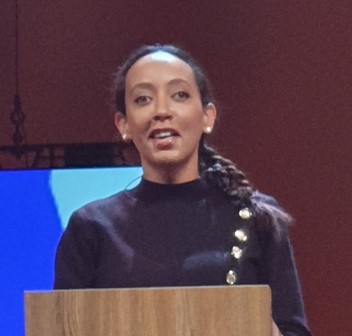Everyone knows Stevie Wonder and the late Ray Charles: exceptionally gifted, groundbreaking musicians who also happen to be both Black and blind. But many other Black Americans have shared their talents with the world – or are still doing so – often working to advance the field of blindness and create a more inclusive society.
The Black History Month 2021 theme is “Black Family: Representation, Identity and Diversity” and explores the African diaspora, and the spread of Black families across the United States.
Bringing Education to Black Children Who Are Blind
Not all of these Black Americans have been blind, but they have eased the way for those who are. One of these leaders is Dr. Laurence C. Jones, who founded the Piney Woods School in 1909, in a rural area just south of Jackson, Mississippi. This educator’s mission was to offer academic and vocational agricultural schooling for Black children and grandchildren of slaves who were living in poverty. But in 1920, Dr. Jones realized there was another unmet need, the education of black children who are blind, and added that to the school’s mission. The author of many books, Dr. Jones invited teachers, both Black and White, from around the country to learn his teaching methods for the blind – along with those of one of his colleagues.
Martha Louise Morrow Fox

In 1929, Martha Louise Morrow Foxx began her tenure as the primary teacher of the children with vision loss at Piney Woods School, a position she held until 1942 when she became the school’s principal. In 1950, the Piney Woods School received state funding and became a sister school of the Jackson-based Mississippi School for the Blind, where Foxx served as principal until her retirement in 1969.
Nearly blind from infancy, Foxx earned bachelor’s and master’s degrees, and was widely recognized for a teaching style that was far ahead of its time. She used a hands-on approach with an emphasis on braille and large-print reading, independent living and vocational training, all of which are now part of today’s Expanded Core Curriculum (ECC).
Foxx also didn’t limit students to the classroom but took them for field trips in the woods near the school to sharpen their other senses. She taught her methods to teachers nationwide, and the “White” school for the blind began using her curriculum in the late 1940s.
Both educators were Inducted into the APH’s Hall of Fame for Leaders and Legends of the Blindness Field in 2013.
Developing Sight-saving Technology and Breaking Barriers for Black Women
Dr. Patricia Bath focused on eye care and invented technology to prevent cataract-related vision loss. In 1973, she became the first Black person to finish an ophthalmology residency. By 1975, she was the first female faculty member at UCLA’s Jules Stein Eye Institute’s Ophthalmology Department.
Dr. Bath found early in her career that blindness was twice as common in Black people as in White people. She then dedicated herself to ensuring underserved communities received equal quality vision care. The National Eye Institute notes that African Americans are more at risk for certain eye diseases, such as cataract, glaucoma, and diabetic retinopathy. Often symptomless at first, these diseases can lead to significant vision loss or blindness if untreated. African Americans face some of the highest rates of vision impairment and blindness from these conditions, with rates increasing.
Dr. Bath co-founded the American Institute for the Prevention of Blindness in 1976, and 10 years later she invented the Laserphaco Probe, a laser technology that helps improve or restore sight to patients with cataracts. In 1988, when she patented the device, Dr. Bath became the first Black woman doctor to secure a medical patent.
Advocating for the Rights of People with Disabilities

Some Black leaders who are blind aren’t historical figures. They’re still making history today. Haben Girma, a human rights lawyer dedicated to disability justice, is the first deafblind graduate from Harvard Law School. She views disability as a chance for innovation—a concept well understood by those who are visually impaired or deafblind, as it necessitates inventive methods to reach goals. Girma’s relentless pursuit of equal opportunities for people with disabilities has taken her across the globe. She educates individuals and organizations about the importance of inclusion, emphasizing its benefits not only for people with disabilities but for everyone.
Girma’s memoir, “Haben: The Deafblind Woman Who Conquered Harvard Law,” gained attention from the New York Times and the TODAY Show. She has received accolades from global figures such as President Bill Clinton, Canadian Prime Minister Justin Trudeau, and German Chancellor Angela Merkel. President Barack Obama recognized her as a White House Champion of Change. Moreover, the American Foundation for the Blind (AFB) awarded her the Helen Keller Achievement Award.